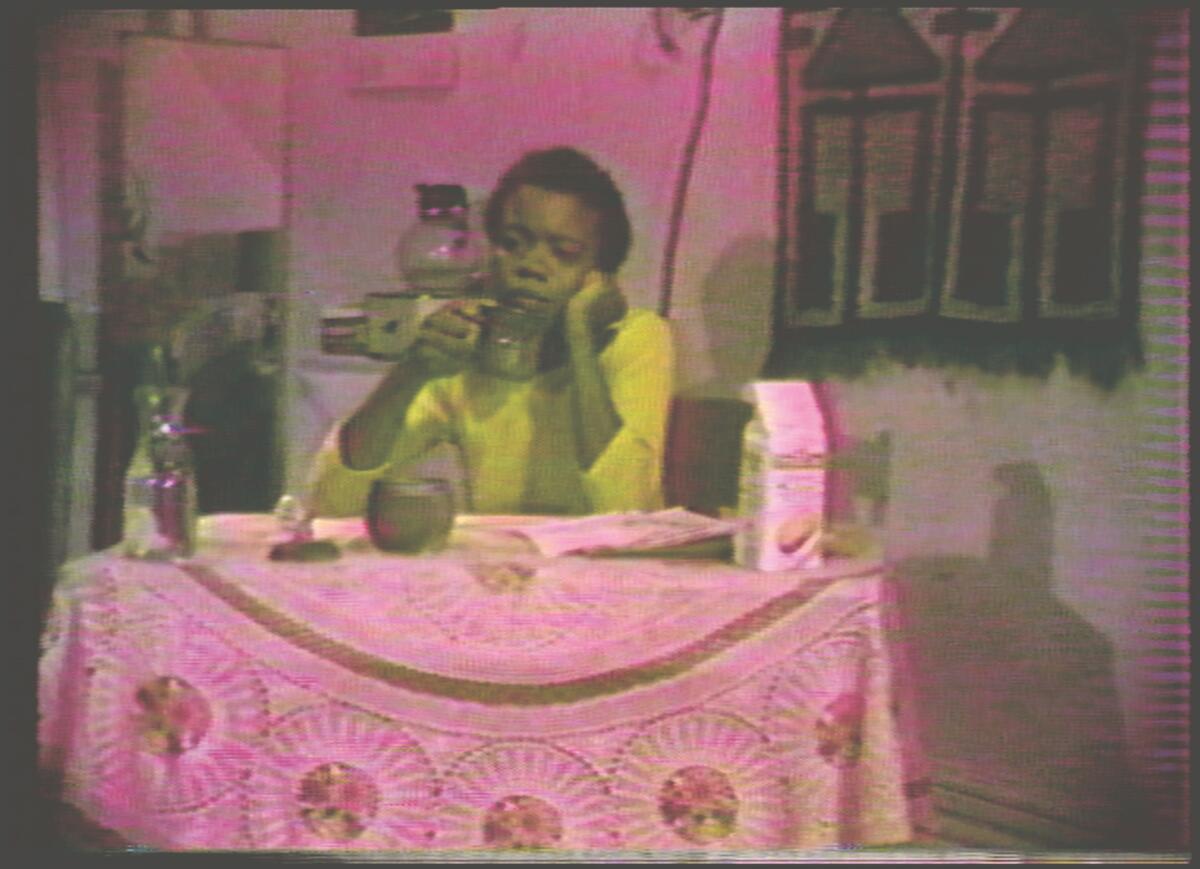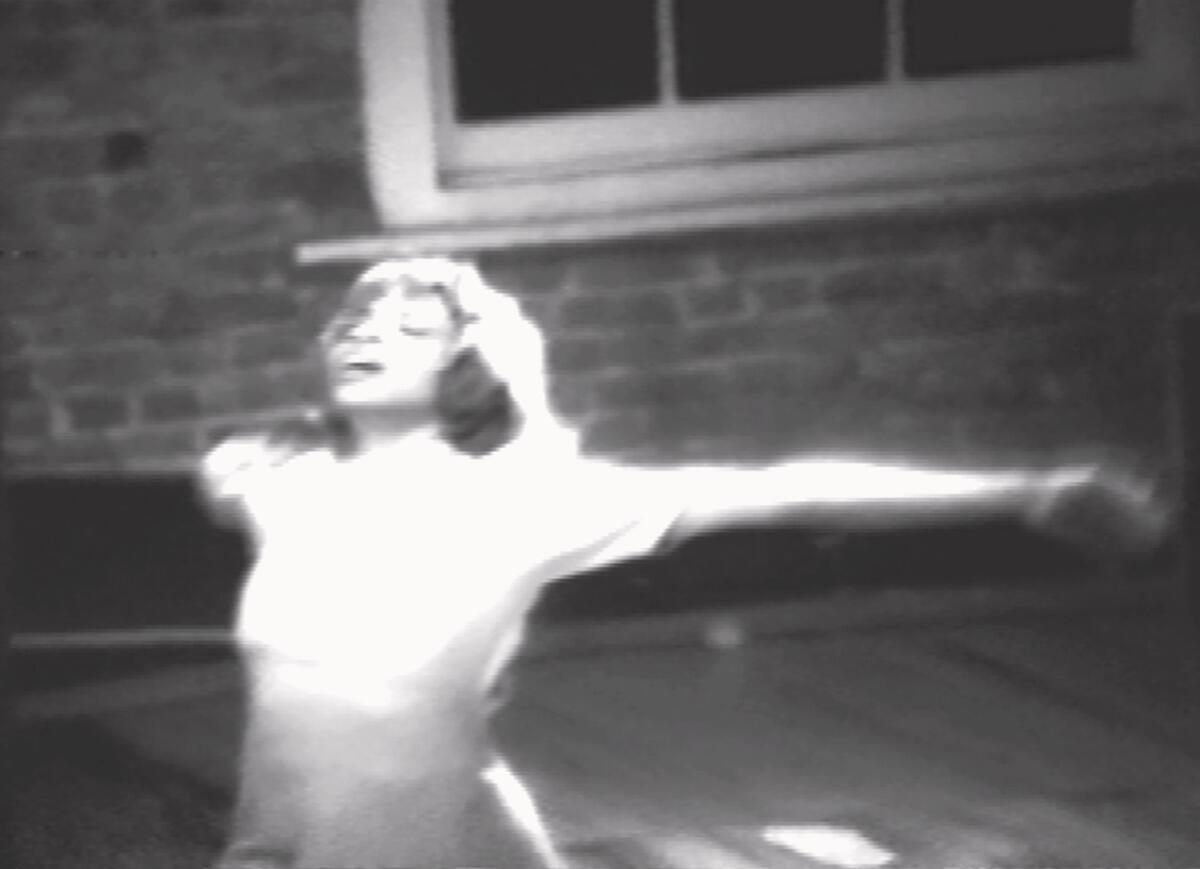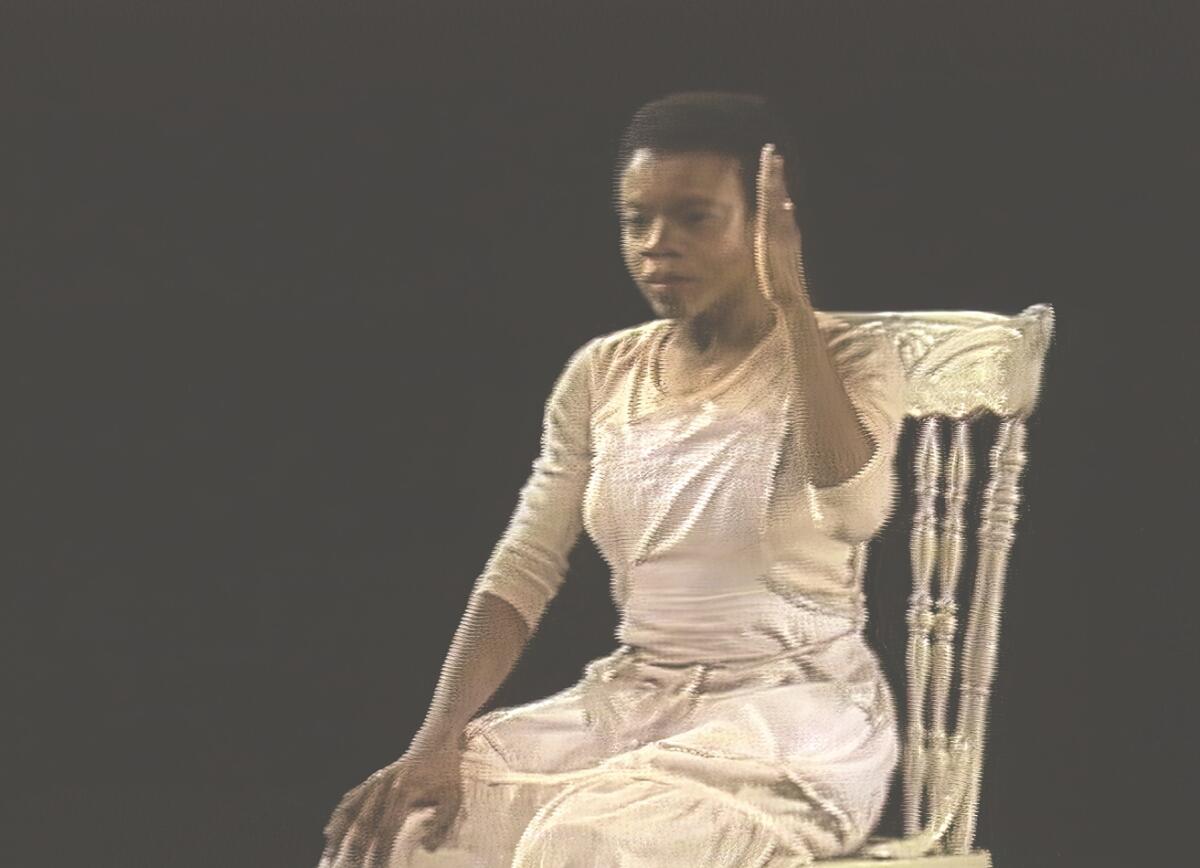Blondell Cummings transformed choreography by approaching dance like ‘moving pictures’

- Share via
When Blondell Cummings got onstage and started dancing, audiences were blown away by her movements. Every moment was unpredictable, spontaneous.
Cummings broke barriers as a radical Black female dancer, choreographer and video artist through her experimental work, particularly in the 1970s and 1980s. Her work defied the conventions of postmodern dance at the time, which tended to favor softer, more predictable motions. The New York-based performer, who died in 2015, called her style of dance “moving pictures,” which drew from her love of theater, postmodern dance, performance art, television and video art and which she often recorded herself.
Although Cummings often performed solo, she collaborated on duets, ensembles, group pieces and hosted public workshops. She was a founding member of fellow dancer Meredith Monk’s company, the House, and collaborated with such trailblazing dancers as Ishmael Houston-Jones and Jessica Hagedorn. Her ability to build intimacy and suspense out of the ordinary occurrences of Black identity, family and spatial realism inspired contemporary experimental artists including Marjani Forté-Saunders.
X Artists’ Books has published the first monograph dedicated to Cummings’ legacy, “Blondell Cummings: Dance as Moving Pictures.” The book details how she made waves in the white-dominated minimalist, postmodern dance world. Her novel expressionism combined postmodern dance, Black dance traditions and experimentation, which in turn helped other Black experimental artists to flourish within their own practices.
The Getty Research Institute teamed up with Art + Practice on an exhibit of the same name dedicated to Cummings’ work, in tandem with the book’s release. The recent show in Leimert Park presented rarely seen videos reflecting Cummings’ philosophy on dance and photography as well as how she explored Black identity and other cultures in her work. While A virtual tour of the exhibit is available to watch online for free.
For the artist’s first-ever solo exhibition, curators drew from “a wealth of material in Cummings’ archive that has yet to be seen, contextualized and historicized,” says Rebecca Peabody, one of its curators. Tapes of Cummings’ dance performances were recently digitized, and after curators had a chance to watch them, they decided to put together a full show illustrating the breadth of the artist’s work, noted Glenn Phillips, another curator of the exhibit.
“As a posthumous show, we needed to make sure we reflected her creative decisions, her methodology and her values,” says Kristin Juarez, an exhibit curator. “As a result, we focused on ways to foreground her voice, which she often used in her dances.” Here are three notable performances detailed in the book, as well as in the show.

“Cycle” shows a woman moving disjointedly through an apartment as she experiences aches, pains and unstable emotions. At one point, she rolls in bed in physical distress. The piece at once captures everyday life while also exploring Black womanhood in the context of private discomfort. Cummings pantomimed the feeling of menstrual cramps and clutched her stomach in agony in one of the first explorations of menstruation and repetition through time-based art.

A mixed-form theatrical work, “The Ladies and Me” took place in an apartment where Cummings portrayed several Black women at once as they went through routines central to their lives. She challenged the traditional pacing of time as she transitioned into stop-motion movement between musical numbers, creating the feeling of a silent film.
Cummings dressed in multiple costumes, which resulted in abrupt shifts in energy and movement. At times, she used props to great effect, including a letter from an absent lover that’s been torn apart. The performance also featured unusual audio and image elements, including an audio recording of Cummings conducting an interview paired with projections of a 92-year-old woman and the sounds of gospel singer Mahalia Jackson humming Duke Ellington’s “Come Sunday.”

A solo performance inspired by a family recipe, “Chicken Soup” was designated an American masterpiece by the National Endowment for the Arts in 2006. In it, Cummings scrubbed the ground with a brush, gradually scrubbing both faster and harder against the surface. At different points during the performance, she used a rocking chair, a frying pan and a green scarf as props. Her unique style transformed her body into a vessel of information, history and activism. It, like her other work, reflected a Black aesthetic vocabulary while defying traditions of white modern dance.
More to Read
The biggest entertainment stories
Get our big stories about Hollywood, film, television, music, arts, culture and more right in your inbox as soon as they publish.
You may occasionally receive promotional content from the Los Angeles Times.











